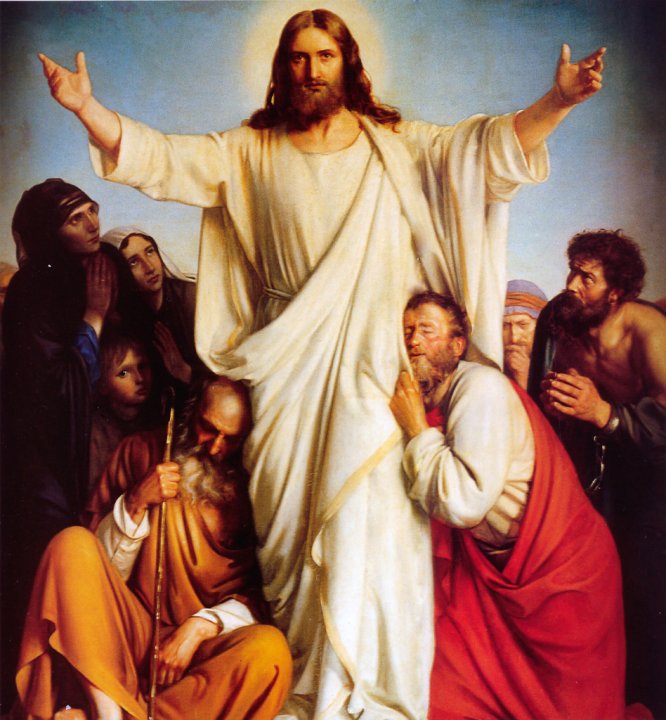2nd SUNDAY OF EASTER-B
I Reading: Acts 4:32-35: United, heart and soul.
II
Reading: 1John 5:1-6: Anyone who has been begotten by God has already overcome
the world.
Gospel: John 20:19-31: Eight days later, Jesus came.
The Great Character of the Church-Jesus Appears to the
Disciples,
John 20:19-23
The
first reading talks about the first Christian community’s unity, fellowship,
worship and sharing of goods among the poor and needy in Jerusalem.
The
second reading explains about God’s love, the nature of Christian’s love and
its working and victory in the world as the children of God.
In
the Gospel reading, the Risen Christ breaths on his disciples and gives his
Peace for the whole range of spiritual well-being as God breathed on the world
at its creation. They received their
commission with priestly authority to forgive and to retain sins.
This
was the first appearance of Jesus to His disciples as a group after His
resurrection. What would His talk and conversation about? John focuses upon the
subjects and topics discussed when Jesus first appeared to the disciples.
1. The disciples were hiding in fear
(v.19)
a.
Was
the same day: at night
b.
Discussed
reports
c.
Jesus
appeared suddenly
2. Subject 1: The risen Lord-His
presence was very real (v.19-20)
a.
His
message: Peace
b.
His
wounds: Evidence
c.
His
effect: Unbelievable joy and gladness when they saw Him
3. Subject 2: The Great Commission
(v.21)
4. Subject 3: The Holy Spirit (v.22-23)
a.
The
endowment or the giving of the Spirit
b.
The
authority
The Great Conviction-Thomas’ Confession, John 20:24-29
This
is an excellent study on conviction and confession. It is the great conviction
and confession of Thomas.
1. Thomas’ frustrated reactionary spirit
(v.24-25)
a.
The
disciples testified; Thomas argued
b.
The
reason: Guilt-he had forsaken and withdrawn from them
2. Thomas’ false picture of Jesus
(v.25-26).
a.
He
was just an earthly deliverer
b.
He
was now dead
c.
Result:
persistent doubt for eight days
3. Thomas’ critical confrontation and
confession: Jesus appeared and challenged and convicted him (v.26-28)
a.
The
confrontation
1)
Jesus
was aware of Thomas’ demands
2)
Jesus
warned and called for belief
4. Thomas’ great lesson for all men
(v.29)
The Great Purpose of the Signs (Wonderful Works) of Jesus, 20:30-31
It is quite clear that the gospel writers did
not include all that Jesus did in their gospels. A few signs are recorded which
are very essential for people according to the plan of God. The word “Sign”
chosen by John who demonstrates that Jesus was the Messiah, the Son of God. In
these two verses, John gives the great purpose of the sings.
1. The great fact: Jesus did many signs
or wonderful works (v.30)
a.
In
the disciples’ presence
b.
Not
recorded by John
2. The great purpose: To select a few
signs that would lead to belief (v.31)
a.
Jesus
is the Messiah
b.
Jesus
is the Son of God
3. The great result: Life through Jesus’
name
Thought: Jesus
gave all the evidence in the world:
·
Acts of love and purity
·
Acts of righteousness and
justice
·
Works of mercy and
compassion
·
Works of miracles and power
·
Works of godliness and
sovereignty
·
Words of truth and
salvation
·
Words of peace and faith
·
Words of hope and joy
·
Words of morality and
discipline
·
Words of commitment and
self-denial
